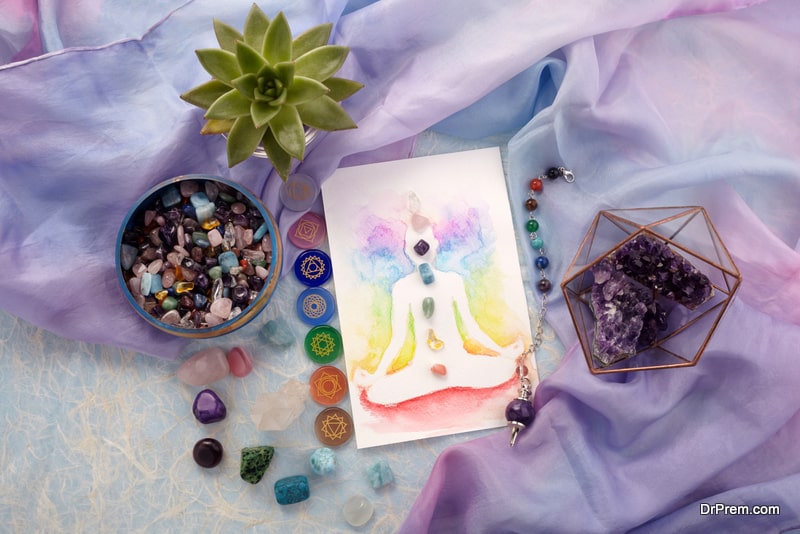If you practice yoga on a regular basis, you will definitely know that an important part of yoga lies in recognizing and understanding the different chakras that rule the body. The chakras are considered essential to achieve inner peace and balance. The root chakra in particular, is the chakra that deals with establishing physical identity, stability and self-sufficiency. Let’s take a closer look at how the Root chakra defines our life and the way we have to live it.
Root Chakra – The Muladhara Chakra
Chakras are considered as energy vortexes that can help an individual attain a higher level of peace and consciousness. There are seven different chakras in the body. They are arranged in a vertical position, right from the top of the head to the base of the spine.
The root chakra is situated between the genitals and anus at the base of the spine. Muladhara translates to root (mula) and support (dhara) in English, with the chakra taking on the form of a yellow lotus flower. The flower is square shaped, has four red petals, eight spears on the corners and sides, and a red colored inverted triangle in the middle.
The red triangle symbolizes the body’s spiritual potential that needs to be aroused in order to attain divinity. The four red petals represent the human tendencies of natural pleasure, greatest joy, blissful concentration and controlled passion.
Importance of Root Chakra
The root chakra forms the base from where the three vital nadis aka energy channels namely Sushumna, Ida and Pingala originate. These channels flow up from the root chakra to the remaining six chakras above it. The channels flow throughout the rest of body as well.
The root chakra is denoted by the color red which represents the earth and its elements. As such, the root chakra governs the prostate, anus, kidneys, adrenals, excretory functions, and lower digestive tract functions. It also governs the sexual activity of the individual. As such, an unbalance in the root chakra can lead to myriad problems in these regions. Some of these include fatigue, sleeplessness, obesity, constipation, depression and digestive disorders, etc.
A problem in the root chakra can also affect an individual’s mood and thought process. It can lead to psychological problems like possessiveness, anger, rage, obsession, low self-esteem and lack of sense of security, etc.
Hence it is essential to attain an open, balanced root chakra in order to avoid these issues. A balanced, open root chakra will promote independence and self-confidence. It will also improve health and energize the body considerably.
Root Chakra Poses
There are different poses that help provide the necessary balance and support to the root chakra. These include:
- Tadasana – Mountain Pose
This pose helps to align the body and ground the feet. It also forms the basis for teaching self-awareness of other similar poses. All one needs to do to practice this pose is to stand straight with the toes of the feet touching each other side by side. The heels need to be placed slightly apart though.
The weight of the body needs to be balanced between the two feet. One should then envision a single line of energy flowing from the crown chakra (at the head) to the root chakra. The individual will then need to press his shoulder blades into his back and release them.
He will then need to lift his chest up, place the arms beside the torso and gaze straight ahead. This pose needs to be maintained for about 30 seconds. The individual will have to breathe steadily while holding the pose.
- Virabhadrasana I – Warrior Pose I
This pose allows one to stretch his arms and shoulders properly. It helps strengthen the lower back and the legs as well. The standing pose will ground the root chakra and stimulate it using the body’s natural energy flow.
The pose starts with standing straight. The left leg needs to be extended to 1.5 meters behind the body. The knee needs to be bent, creating a 90 degree angle above the ankle. Following this, the head, shoulders and knees need to be pointed forward while the left foot needs to be turned in a bit. The individual will then have to look upwards, exhale slowly and relax his shoulders. This position has to be maintained for about 30 seconds. Following this, the individual will need to lower his arms to the sides and bring back the left leg to its original position. The Warrior pose will then have to be repeated with the right leg.
Also called as the Muladhara Chakra, the root chakra plays a vital role in helping an individual establish his physical identity. It plays a crucial part in helping one achieve self-sufficiency and stability via a series of poses that help open up the chakra and balance it.








